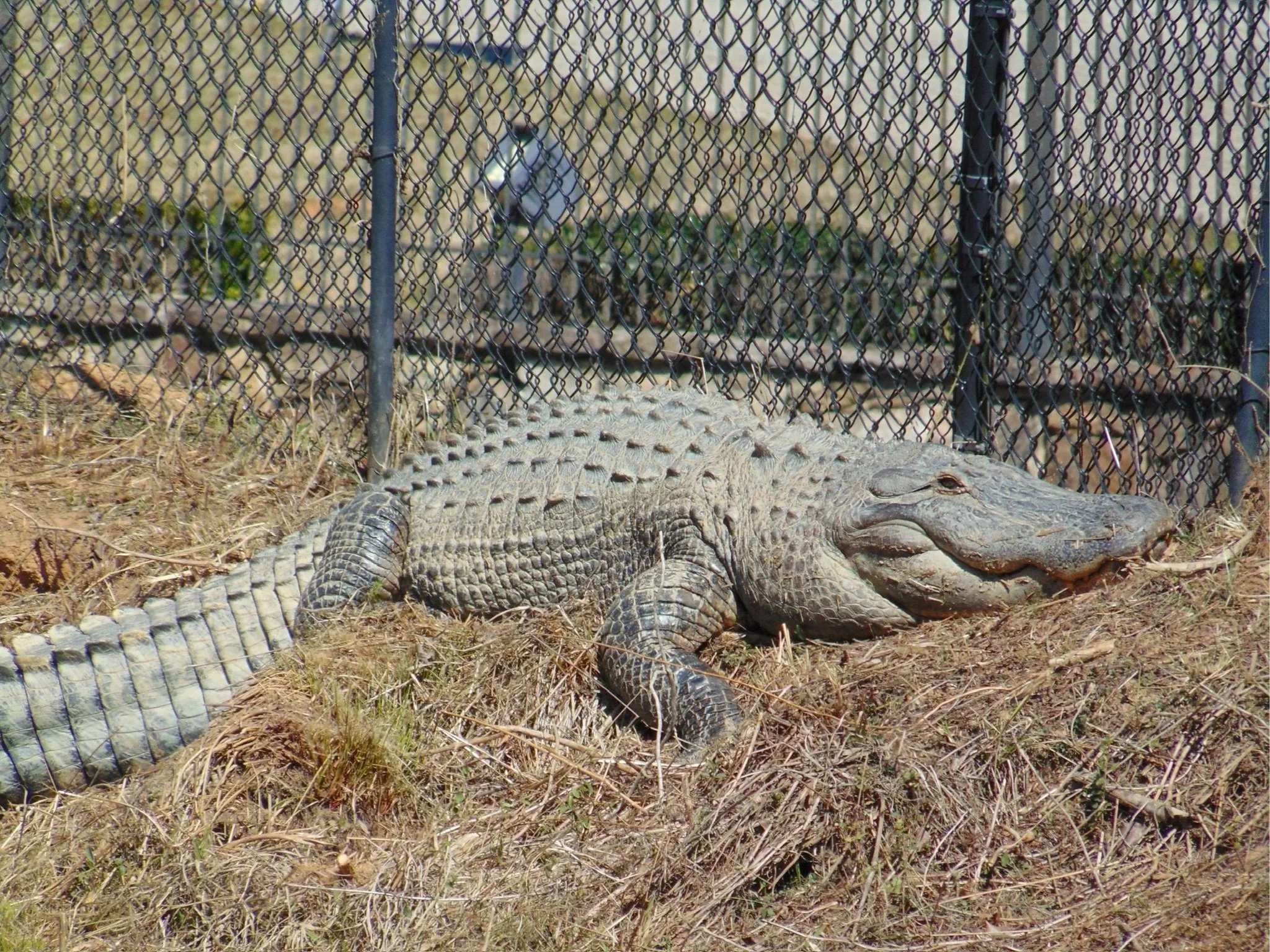American Alligator
Scientific Name: Alligator Mississippiensis
Habitat: Marshes, Swamps, Rivers, Lakes, Canals
Diet: Carnivores
Weight: 200-800 lbs.
Conservation Status: Least Concern
Range: Coastal NC South to FL; Along the Gulf Coast to Texas and Southeastern OK
Lifespan: 30-50 Years
Size: 8.5-14 ft.
The American Alligator is a large, semi-aquatic reptile states like Florida, Louisiana, Georgia, and South Carolina. They have a broad, U-shaped snout, armored bodies covered in dark, ridged scales, and powerful tails used for swimming. Its upper jaw is larger than the lower jaw, so that when the mouth is closed, no teeth are visible. They are always growing new teeth to replace broken ones. Their coloration is typically dark gray to black with lighter bellies, which helps with camouflage in murky waters. Young alligators are black with bright yellow bands, which fade as they mature. American alligators are what you would call opportunistic carnivores, meaning they will eat mostly plants and vegetation, but if the opportunity arises, they will eat meat. They are most active at dawn and dusk, inhabiting freshwater environments such as swamps, marshes, rivers, and lakes, where they feed on fish, birds, amphibians, and mammals. Alligators play a crucial ecological role by creating “gator holes” that provide water for other animals during dry periods. Breeding takes place in late spring to early summer, and males below to attract females and establish territory. After mating, females build vegetation nests above waterlines and lay 20 to 50 eggs. The mother guards the nest during incubation, which lasts about 60–65 days. Hatchlings call from inside the eggs when ready to emerge, and the female assists them by uncovering the nest and often carrying them to water in her mouth—demonstrating a level of parental care uncommon among reptiles.


